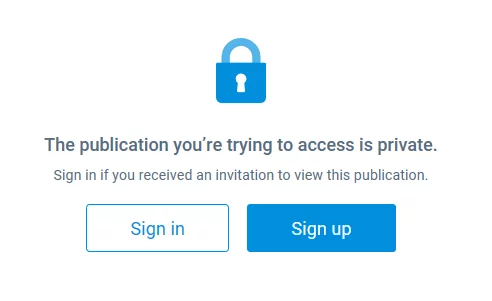Internal communication strategies in the digital era
Companies with a solid internal communication strategy enjoy the perks of having more engaged employees and a healthy company culture. In other words, internal communication should be one of the main pillars of a company. There is nothing new about this.
Good communication within a company is a living, complex mechanism that changes day by day. However, simple communication processes such as securely sharing internal documents will forever remain of utmost importance.
Efficient internal communication within an organization is so much more than just executing clear instructions. It’s more about building a solid company culture where everyone is feeling empowered to reach their full potential.
When it comes to creating and implementing a powerful internal communication strategy in this digital day and age, things get, well… a bit more complicated.
With this in mind, let’s see what internal communication is all about in 2020. How are companies managing to communicate more efficiently in the digital era? Let’s find out.
What is internal communication?
According to a Gallup case study on the workplace, consistent communication is linked to higher engagement. It seems like According to Willis Towers Watson, effective communication and financial performance are strongly related: companies that are highly effective at communication are 1.7 times as likely to outperform their peers.
But before going into the depths of internal communication strategies for the digital age, let’s try and define this rather complex concept.
Briefly said, internal communication is the process of sharing information inside an organization. This process needs to be aligned with all the organization’s main objectives. But there is so much more to this than meets the eye. You don’t need to be a professional writer or linguist to develop an effective internal communication strategy, but you do need to understand the shared objectives of your workforce. Internal communication done right has a big potential of solving difficult issues a company may be facing. Therefore, it’s crucial to identify the different types of internal communication before aiming to make a strategy.
By doing this, you get a better chance of developing a strong, personalized internal communication strategy for the company you work for. Or, even if you’re just a key facilitator, being aware of the internal communication flow is crucial. Internal communicators have the daunting task of ensuring staff they have the right tools and support from their company in order to communicate freely and openly.
Because efficient internal communication has the capacity of building a strong bond between management and employees. Not to mention the good cooperation between different sectors of the same company.

So, let’s define the most common types of internal communications:
- Leadership communication (top-down)
- Change communication
- Information communication
- Two-way communication
- Peer communication
- Culture communication
- Campaign communication
Why having a strong internal communications strategy is crucial
We live in a digital day and age. That means work is now more dynamic than ever. With the rise of freelancing, virtual business addresses for start-ups, and remote work as companies hire remote workers in droves, it’s excruciatingly hard for a company to keep all its employees on the same page. Moreover, while location-agnostic hiring through services like Remote is making global expansion more viable, it further increases companies’ internal communication challenges. This is why we’ll see some communication trends evolving. One being, segmenting employees or using more mobile-optimized communication tools. Such as Slack. But more on this later. Bear with me!

Efficient internal communication requires a good strategy that implies the willingness to always learn and adapt.
Because the workforce is so dynamic and jobs have changed a lot in the past decade, having a strong company culture that aligns with people working there will make all the difference.
One way to motivate employees and have them engage in the work they do is to be open about the company’s objectives and ethical ideas. Create reports and other documents that they can access anytime. It will make them feel part of the organization.
The sense of community is just a fancy syntagm that represents how an employee feels at work. If they feel safe and confident enough to talk about new ideas and other work issues, that means you are doing internal communication right.
Internal communication strategies in the digital age
Before assessing the internal communications in your enterprise, keep in mind that communication is an ongoing process. It’s not a strategy you make once and expect it to work for years in advance.
As with anything, before coming up with a plan, assessing the way your company is doing internal communication is crucial. Why? Because understanding the specifics of your company culture is essential. As well as evaluating the status in which communication is done now, from face-to-face interactions to digital channels like ERP systems.
Assessing the situation
Here are a few actionable tips you can use when assessing the current internal communication strategy in your company:
- How is your current strategy performing? Pinpoint the biggest strengths and weaknesses.
- Who is in charge of the main process of implementing the internal communication strategy in your company? Human resources, PR department, etc. How are they doing?
- What are the main communication channels/tools your company is using?
- What do you want to achieve through an efficient internal communication plan?
- Set specific SMART objectives.
- Think about how to get there.
- Most importantly, ask your employees for feedback. This is the last but most important step.
Now, after checking all the bullet points above, if it turns out your company’s internal communication strategy is a bit outdated, you need to spice things up. How? Lucky for you, we gathered a few tips and tricks to help you take your strategy to a whole new level. A digital one.
Millennials and the work environment
Today’s work culture has changed a lot. And it has a lot to do with the rise of the so-called “gig economy” which is estimated to be about 34% of the workforce, in 2019, expected to be 43% by 2020.
What does this have to do with millennials and internal communications? Well, a lot. Because of the rise of the gig economy, the work environment became more flexible. Companies soon started to realize that millennials, especially, don’t just work for a paycheck, but they also need a purpose. Developing this idea even further, they want to work for organizations with a mission and purpose that aligns with theirs. And they don’t enjoy the feeling of being supervised by a boss, they thrive when feeling like they have a coach, a mentor. Millennials want to work for managers who can support, position, empower and engage them, and who care about them as employees and people.

But, not only. For 58% of millennials, “quality of management” is extremely important in a potential job. Non-millennials also rate this attribute highly, with 52% of gen Xers and 60% of baby boomers said the quality of management is extremely important to them.
And so, it makes total sense to look for new digital tools and ways to make internal communication more efficient throughout today’s companies.
Internal communication trends in 2020
Because communication is an ongoing process, let’s see what trends and strategies should people working in the human resources field or public relations take into consideration for the upcoming years. Some of them you might already be applying in your companies, like handing out employee handbooks every time you hire someone new or having a solid brand book, nonetheless, these are still worth mentioning.
Segmenting your employees
Think of this as target audiences in your marketing strategy. Make sure the right message goes to the right person.
As an example, tailor communication channels to focus only on the aspects that directly affect the message receiver. For instance, it may not concern someone from the design team to get notifications from live chat support. It’s very important to find the right balance between keeping everyone informed while still communicating important messages internally. Using premade issue templates in project management software like Jira, for example, is a great way to streamline segmentation and make sure that everyone implicated in a task knows what they’re supposed to do.
Security first
Same goes for the security of the documents shared internally. Goes without saying that this is still one of the most important aspects of efficient internal communication. Not to brag, but Flipsnack allows for securely sharing internal documents with the ease of typing an email address. You can share your flipbooks with only a few selected people, and no one else will have access to view them.

We made it extra secure and you can share confidential documents within your company by using the password protection option. No one will have access to your documents unless you give them the password.
Learn more about how to securely share internal documents here.
Mobile-first approach
With the rise of remote work, more and more companies need to step up their internal communication game and use apps or design custom mobile apps that will empower mobile communication across the entire company. By doing so, you get a better chance of having more engaged employees.
It’s crucial to focus on finding new ways to keep everyone informed while keeping the same strategy we already talked about: segmenting your employees and making sure you don’t send precious information to the wrong people in your organization.
One of the most beloved apps for internal communication in this digital era is Slack.
Why? Because it makes internal communication more fun and engaging (Yes, I’m talking about Gifs). Also, it’s very easy to segment and make separate channels for different goals. And yes, the mobile app works perfectly too.
Employee advocacy
Your employees are your best communication assets. Keep this in mind. If you manage to keep your employees happy and aligned with your overall goals and objectives, they will make sure to talk about it. To their friends and family but maybe your organization can take this to a whole new level.

According to Social Media Today, employee created and shared content is not only 8x more likely to be engaged with than brand shared content, but it’s more authentic, too.
Your organization can’t expect for this to happen organically. It rarely does. So, as an internal communication facilitator, you may want to do some research beforehand. Ask people inside your organization how willing they are to be your brand ambassadors. Monitor to see if this happens naturally and how often. Or, pay attention to the information they’re sharing already.
Again, it all goes back to knowing your organization better than anything, before applying this modern internal communication strategy in your company.

If the answer is positive, you can start the brand employee advocacy process in your company. Empower internal influencers by encouraging them to share their thoughts on social media. Make sure all this content is indexed by using a unique hashtag. Last, but not least, make sure to analyze the results.
Employee experiences
We talked about how important it is to use your employees as internal influencers in your overall internal communication strategy. But, it’s also super important to nurture this kind of shareable employee experiences.
Parties or cool office spaces like Google and other types of team building activities could make for authentic instagrammable moments. But not only. Think of these activities just as the cherry on top.

Brands like SAP Australia has actively dedicated time and resources to improve the employee experience. Also, developing the right company culture to engage and motivate people.
As they say, “great employee experiences aren’t just about free food and ping pong tables. They’re about supporting your people in moments that actually matter – in both work and life. By combining X and O data, you can predict and prevent burnout, make individuals feel valued, and more.”
This strategy paid off. SAP Australia has been awarded the 7th on the 2019 Best places to work list, worldwide.
Our internal communication approach
Since we talked a lot about the new ways and strategies in which you can take your internal communication to the next level, here’s what we do here at Flipsnack.

Internal communication is key to ever expanding teams, as we are at Flipsnack. Because we are constantly growing, it’s quite a challenge to keep the communication at a small team level when the number of colleagues goes up and up. Therefore, as a PR specialist I try to deliver messages accessible to everyone; maybe it means that I have to write the messages in two different languages or giving the new colleagues more context so that the information I am trying to send out, makes more sense to them.
Even though we are a software company and it makes sense to use a lot of online communication software such as Telegram or Google chat, I try to keep the small team atmosphere by also talking to people face to face about the messages I send. It gives the information a personal touch showing that I care. Not to mention, it’s a good way to get a reply back.
There is a global tendency of going back to the roots regarding internal communication and that being face-to-face communication. Spoken language enhances the credibility of the message. So, we try to do the same at Flipsnack: we use our platform to securely share important documents, but also the latest communication apps to keep everyone on the same page (we do love a good GIF).
As a PR professional, I am working intensely with the HR department in trying to build a balanced team, focusing on authentic interpersonal relationships and employee feedback.
Conclusion
At the end of the day, when done right, internal communication needs to tick two major boxes: knowing your employees very well and security.
Sharing the right amount of information with the right people. Having a clear and efficient internal communication strategy is all about the day to day activities within your company. There is no “one size fits all” strategy or recipe to follow, but more like, listen to your employees and see what works best for your organization.
Let us know in the comments, how does your internal communication process look like in your organization?



